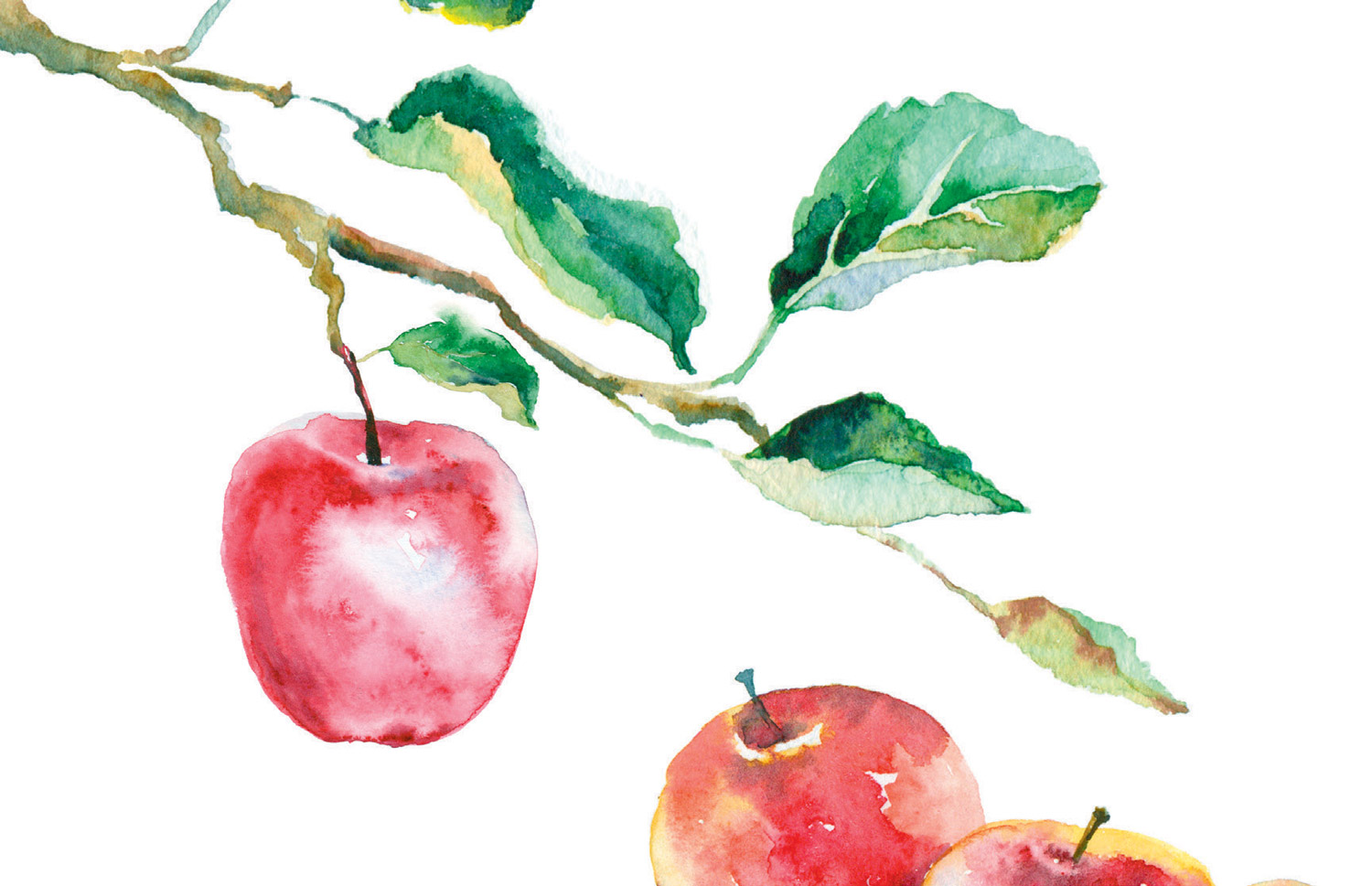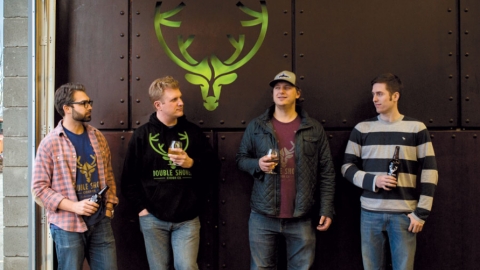Capturing Fall's Flavor with Alaska Apples
Alaska’s Apples
Last year I embarked on an epic quest to create a recipe that truly embodies fall. That crisp feeling in the air, thick wool sweaters, the call for hot steaming mugs of cider, temperatures begging for the wood stove to be stoked, and warm baked goodies. I have always loved the Two Sisters Bakery in Homer and, without a doubt, my favorite is their pecan sticky buns, fresh from the oven. For years now I have tweaked recipes trying to encapsulate the exact texture of bun I wanted with the right pecan sticky sauce ratio. I knew the moment I stumbled upon an apple cider caramel that the two had to be combined.
Apple cider in its true sense is a non-pasteurized, unfiltered, fresh pressed apple juice that can be warmed and spiced with cinnamon, nutmeg, cloves or what have you. It is the epitome of fall flavor and when boiled down to a wisp of thick syrup, its flavor only intensifies. This is the base for the perfect apple cider sticky bun sauce and I wanted to use Alaska apples to create it.
I knew there were some apple growers in the Matanuska Valley and was able to talk my way into getting some shipped to Bristol Bay by friends last fall, but this year I wanted to be ahead on my pre-season apple game. Once my quest began for apples in abundance I found a number of very successful apple orchardists in Alaska, ranging from the Fairbanks area down through the Matanuska Valley to the Kenai Peninsula — all with varying techniques and business models. There are also apples being grown all around Southeast Alaska.
Some truths held for all the growers I spoke with. Apple growing in Alaska begins with a hardy rootstock such as Baccata, a type of crab apple, as the base for grafting on other fruiting varieties. Apple trees mature for 5-7 years prior to fruiting and in some cases the assurance of survival isn’t set for 3-5 years from the time of the graft. Fruiting season begins mid-August and continues well through the first hard frost, with individual varieties having differing harvest times and storage capabilities.
In most instances the earlier the apple is ripe the sooner it should be eaten, with the apples harvested after the first hard frost storing the longest. A good fence goes a long way in protecting one’s tree from pesky visitors like moose. A windbreak can even shift one’s temperature zone, broadening orchard resilience. Bear in mind we have various microclimates throughout Alaska, so ultimately the success of different varieties is based on where you live. Many orchardists offer trees for sale and grafting classes come spring for those who wish to embark on their own apple growing enterprise.
The message resounded that if you want to grow apples in Alaska you should talk to someone already doing it successfully; and in our state the resources for such an education are impressive.
Meet the Growers
Clair’s Cultivations is a family orchard in Fairbanks just off Chena Hot Springs Road. It has been in operation for over 20 years. With an estimated 200 trees and 50 varieties, their sellable harvest is roughly 6,000 pounds annually. The Lammers family is well known in the Fairbanks area as apple growers with Alaskan know-how. While they have offered their apples in local grocery stores and farmers markets in the past, they recently shifted to a full self-service “U Pick” farm model and invite everyone out to visit.
Fire Apple Orchard in Big Lake is somewhat of a young orchard, having only been in operation for 17 years. Dan and Nancy Moore also run their orchard as a strictly pick your own farm, offering an average of 2,000 pounds annually of roughly 60 apple varieties. In addition to apples, they grow 13 varieties of tart cherries and 9 varieties of plums. Trees can be purchased here during the growing season (which Dan described as ““frost out to frost in”) and a little advice is offered with every sale.
The Elliot’s of Wasilla run All About Apples, an orchard nearly 25 years in the making, which now boasts 140 trees with 120 varieties. They annually offer 150 grafted apple trees for sale throughout the summer. Their 2,000-3,000 pound apple harvest is available from their home orchard, in local CSA boxes, farmers markets, and even at a local restaurant.
Arctic Organics, the Bean family’s 20-acre orchard and vegetable farm in Palmer has 60 trees producing anywhere from 1,000-2,000 apples per tree. Their farm alone fills 100 families’ CSA boxes, in addition to a farm stand and deliveries weekly to the 15th & Cordova farmers market in Anchorage. River Bean proudly shares their approach to growing organically. Their harvest is pesticide, GMO, and chemical-free and they work to “foster a direct sustainable connection between farmer and consumers in their community,” as Bean is fond of saying.
For Mike O’Brien, owner and founder of O’Brien Garden & Trees, production is “more than growing fruit trees — these are the roots I’m passing to my children and they to their children.” This year they are celebrating their 35th year on their family’s 6-acre orchard in Nikiski. They sell around 100 varieties of apples grown on internationally sourced scion wood (during the grafting process the scion wood is grafted to the rootstock). Their goal is to find the best varieties for both high tunnel and outdoor growing. O’Brien’s mostly grows dessert apples for fresh eating, but do have a few cider varieties and pie apples. Every 3 weeks (starting the third Sunday in August and running through October) they hold apple tasting events with apples straight from the orchard and allow visitors a chance to pick their own. They are also open every Saturday afternoon and can be found on the Peninsula at local farmers markets.
> For everything apples in Alaska, check out the Alaska Pioneer Fruit Growers Association at APFGA.org









